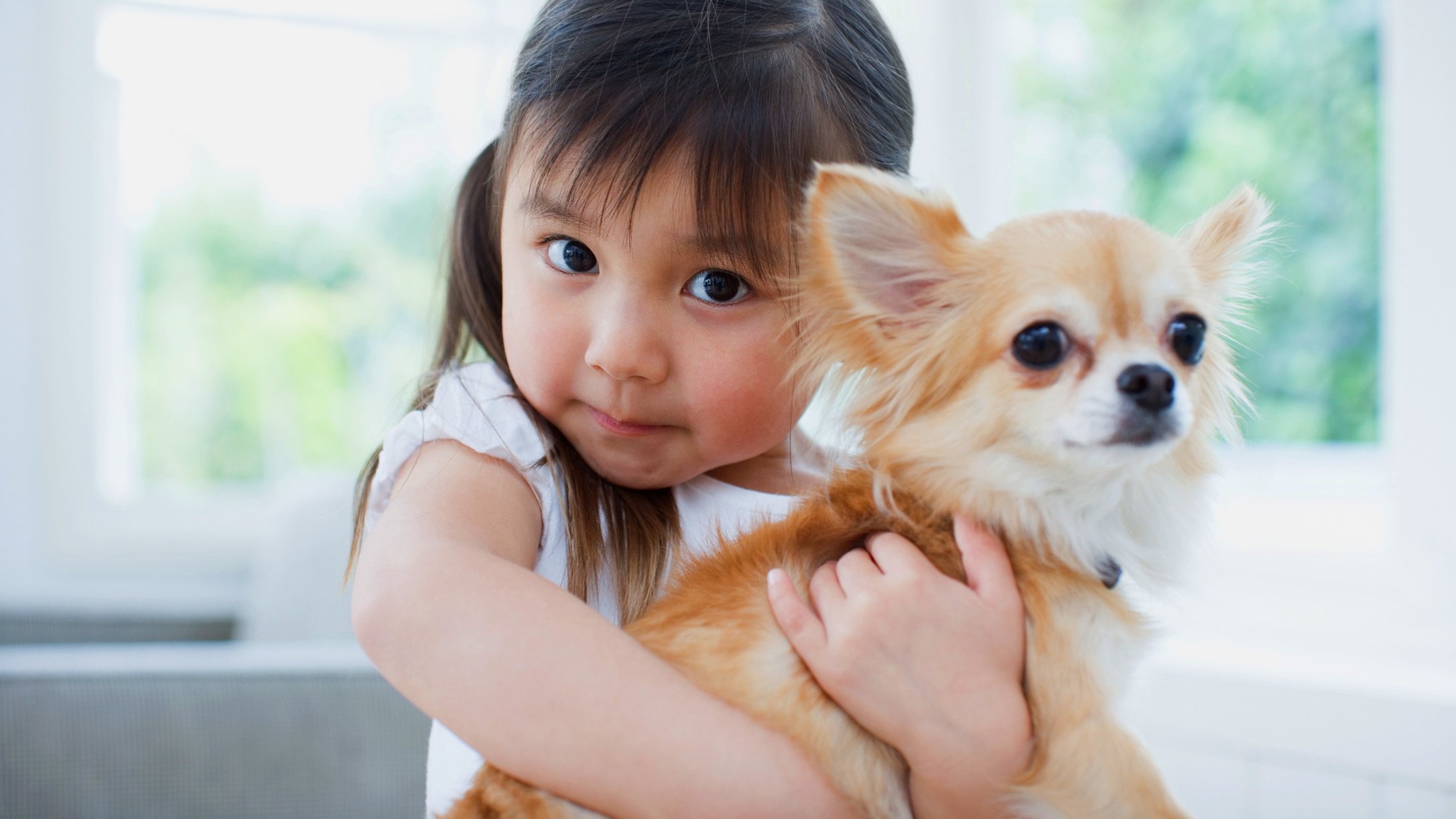
At a recent get-together, a neighborhood child climbed onto my chocolate Lab and began to ride her like a horse. My dog first looked alarmed, and then hung her head in resignation and took the rough play like a champ. I redirected the child to another activity and put both of my dogs in their crate for a break.
“She’s fine,” someone commented to me, as I locked them up.
I don’t believe that either of my friendly, goofy dogs would ever bite anyone, but I also don’t like to take chances. As a new dog owner, I always assumed that if a dog wasn’t growling or acting aggressively, all was well. But I’ve learned that dogs make subtle signs of discomfort long before they reach that stage, and my dog was definitely uncomfortable.
Toddlers are notoriously unpredictable creatures, even for the calmest of pets. They crawl — something your dog is not used to seeing humans do. They change speed and direction frequently. They fall a lot. They screech and cry. And, if they’re able to catch up to a dog, they often hit, pull its fur, or try to climb on its back. It’s a lot for a dog to take. As growling and acting aggressively are usually a last resort for a dog before biting, it’s important to notice the smaller behavioral signs of stress and discomfort so that you can separate dog and child before things go wrong.
Below are two videos that show some of these signs of stress. The first was taken by a responsible dog owner who knew from the get-go that her dog was never comfortable around her niece. The second is a home video that shows exactly how not to let your toddler play with your dog, but it has excellent examples of subtle signs of stress.


Some of the more subtle signs of stress talked about in these videos include:
- tongue flick or licking lips (when not eating or anticipating a treat)
- yawning, when not expected to be tired
- pacing
- excessive alertness or interest
- avoiding behavior
- sweaty paws
- excessive shedding
- whale eye (The dog turns his head away, but keeps an eye on what he is watching, so that you see the whites of his eyes. This is a sign of stress that should get a reaction from you immediately. Your dog is unhappy.)
- scratching not related to allergies, etc.
- panting not related to heat or exertion
Until we knew better, we saw some of these signs from our dogs every day. Many of them — the tongue flick, the scratching, the panting — are moves your dog makes to comfort himself and assure you that he means no harm.
Sometimes, as humans, we love our dogs in the way that makes us feel good — hugging, wrestling, forced cuddling, getting face-to-face, etc. — but they don’t make our dogs feel good and can create anxiety. Now that we know better, we are retraining ourselves to respect our dogs’ personal space and have taught our kids to, as well.
If you have a new baby in the house, the ASPCA has an excellent list of training activities that you can do with your dog to help him prepare for the toddler years.
